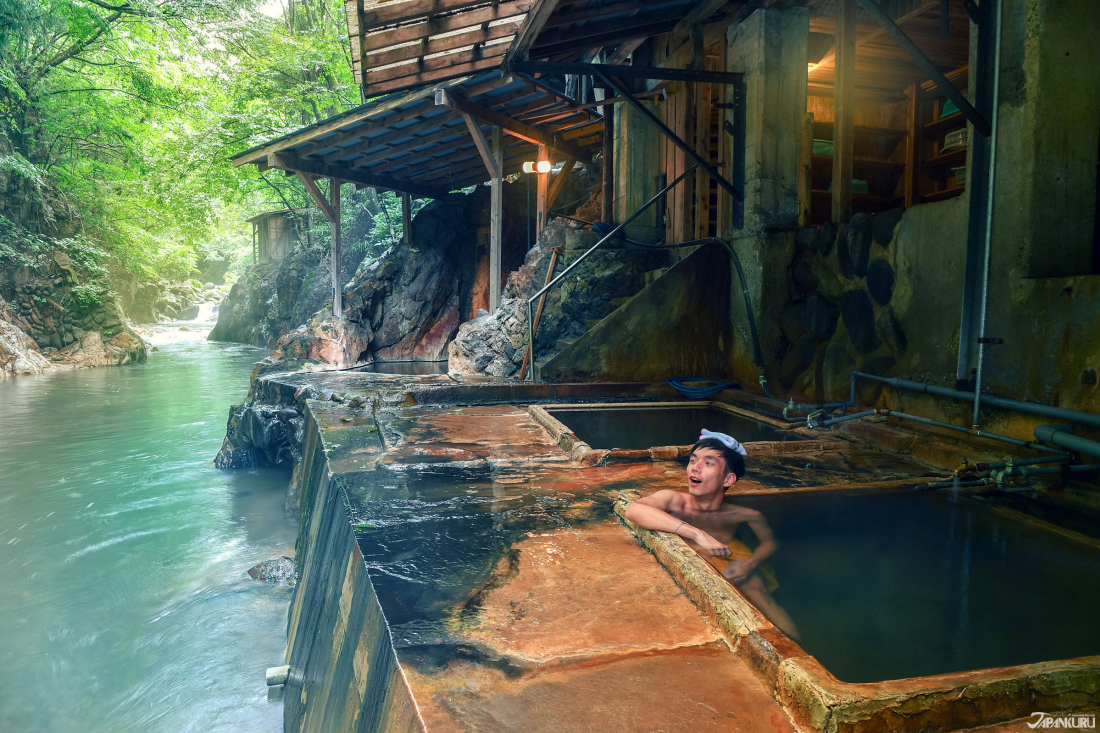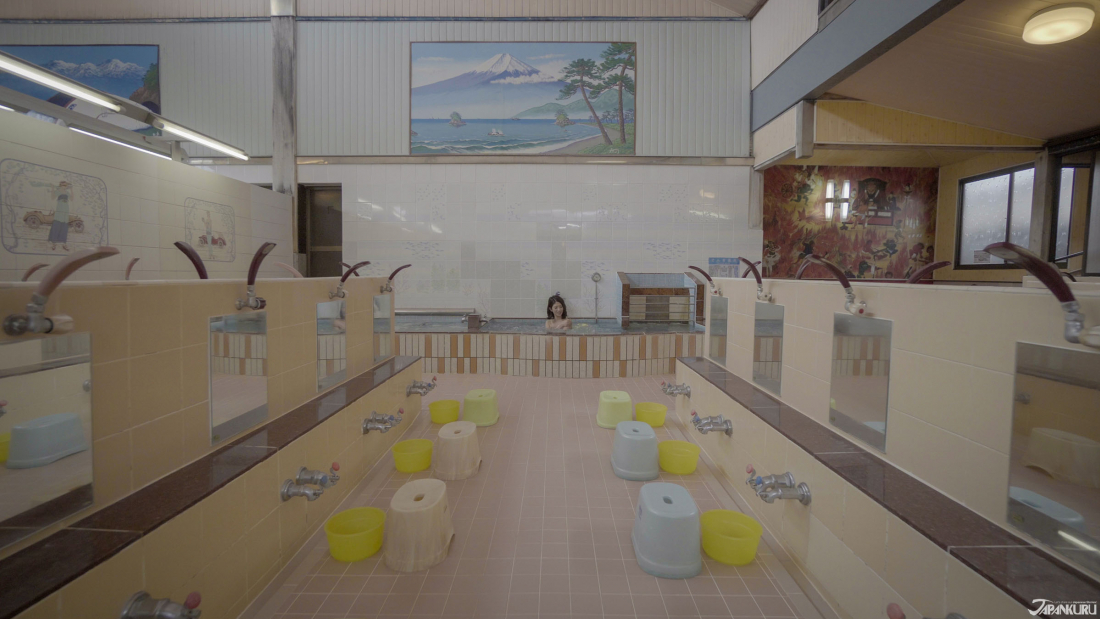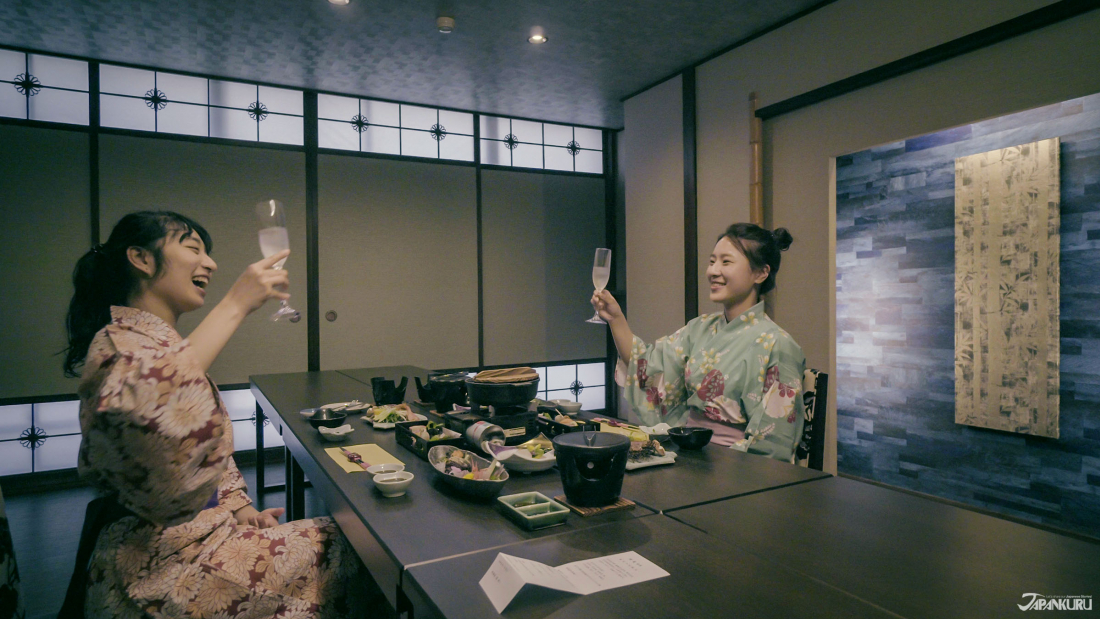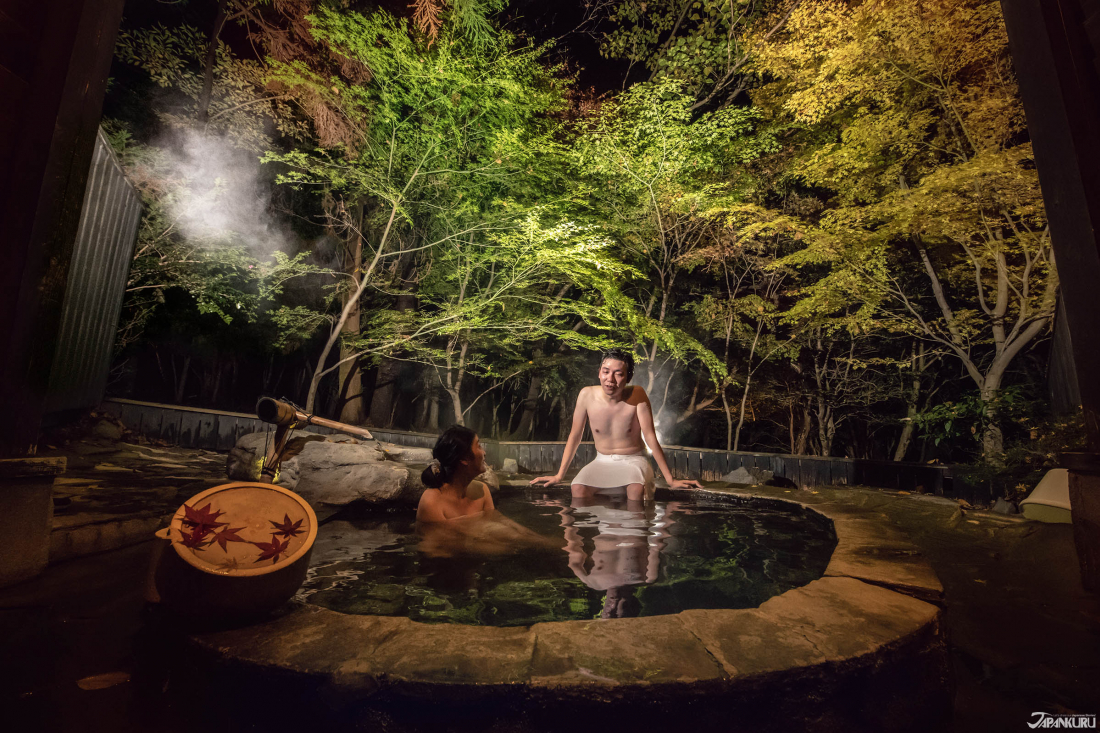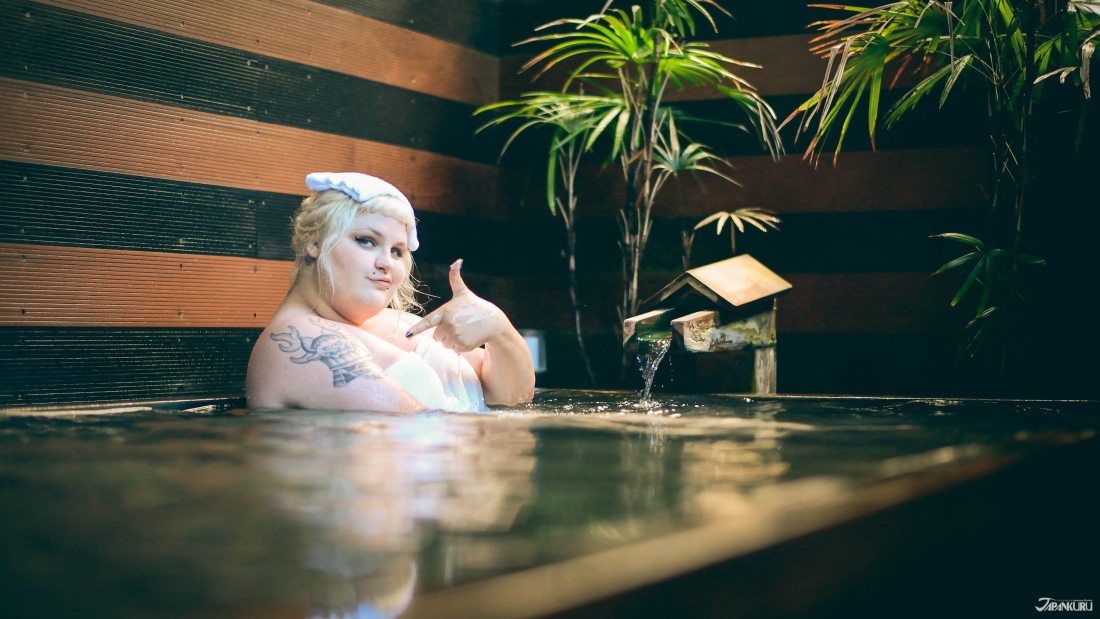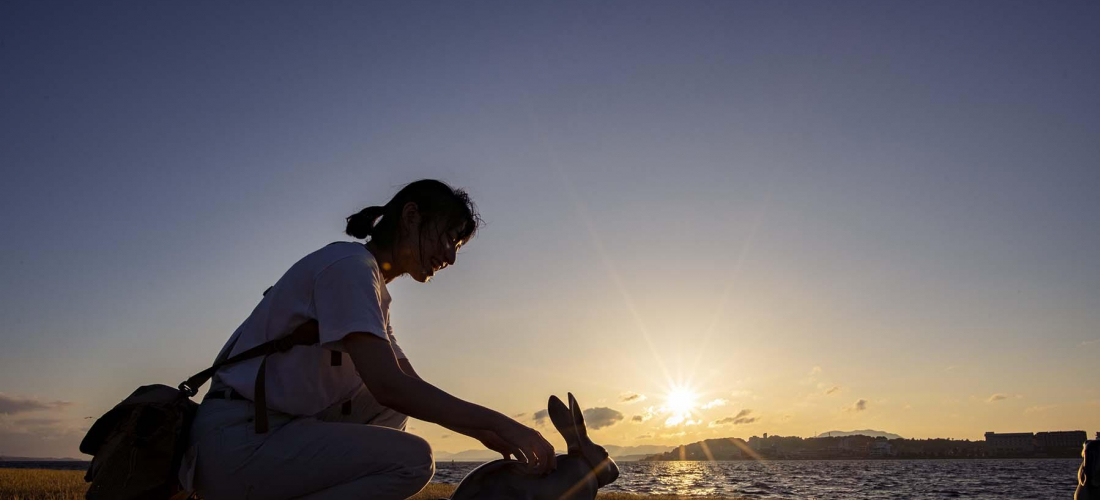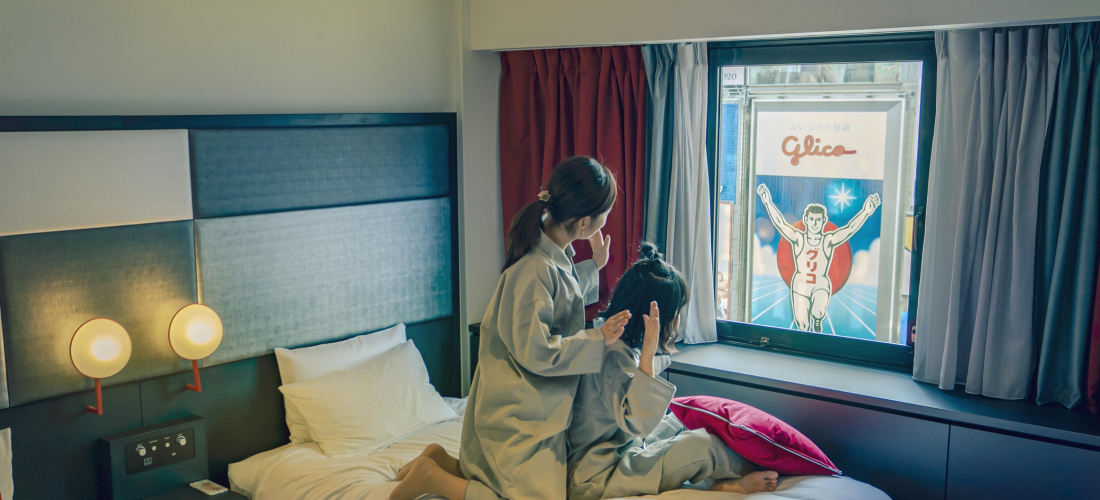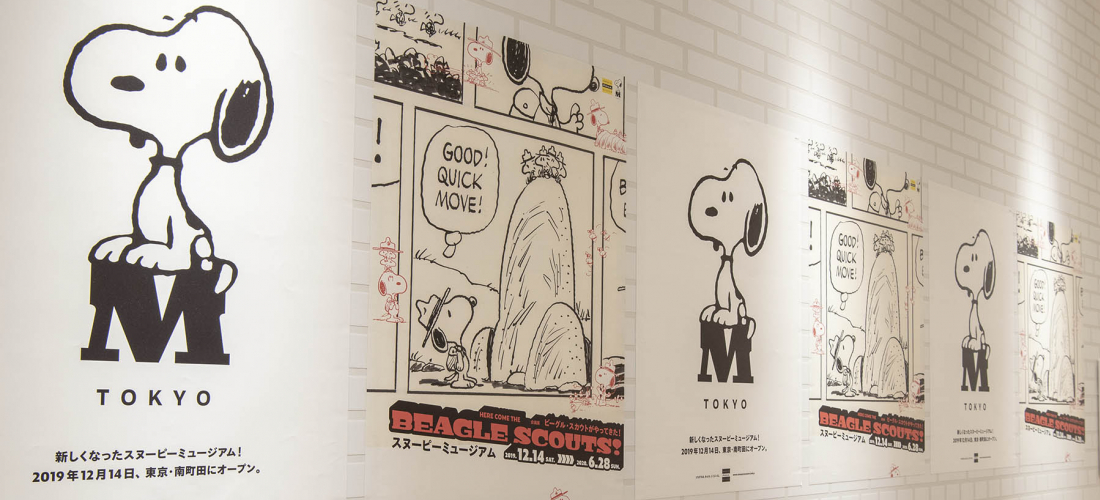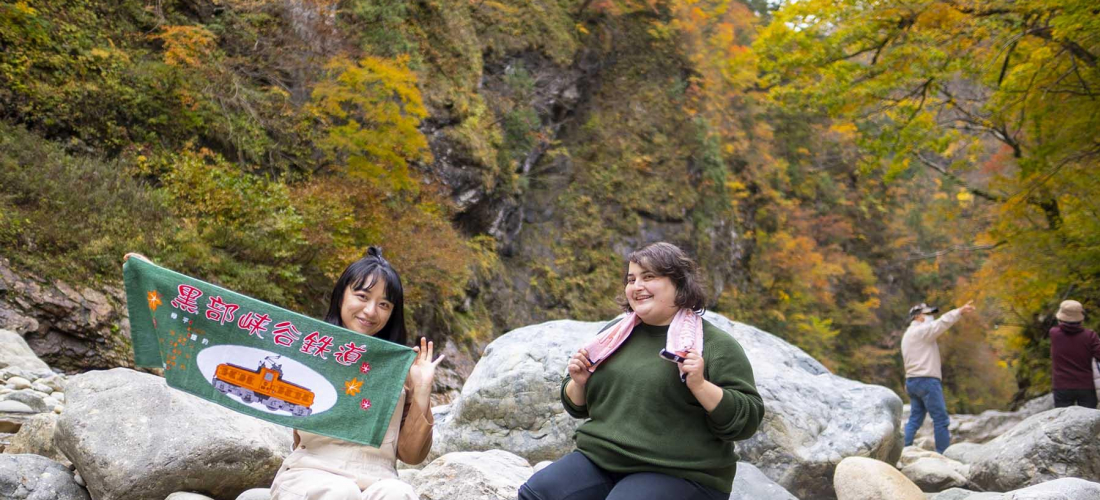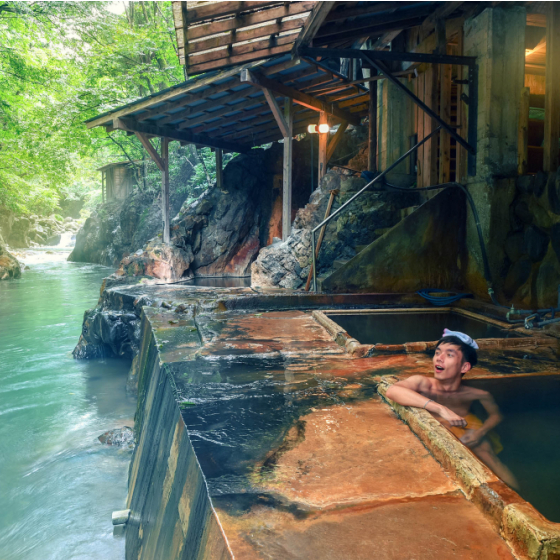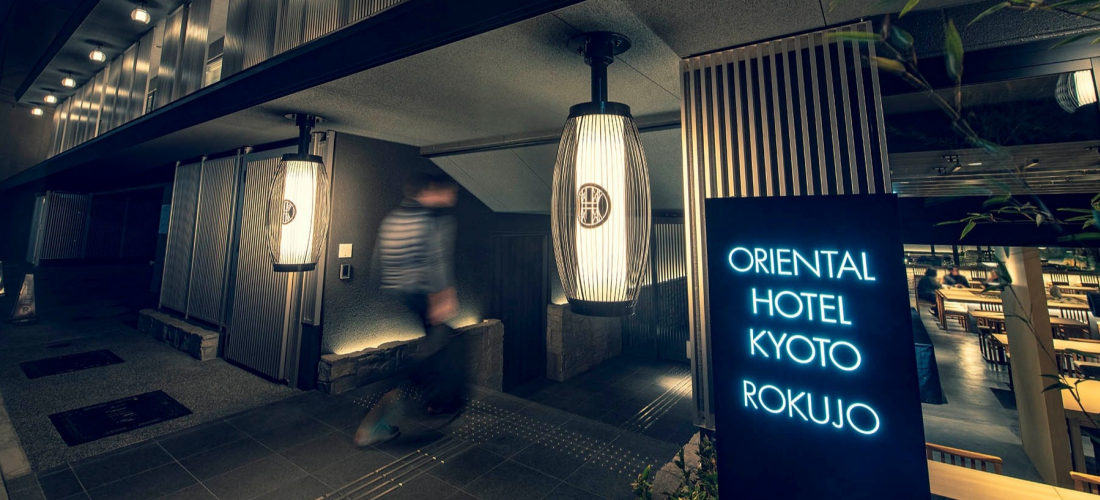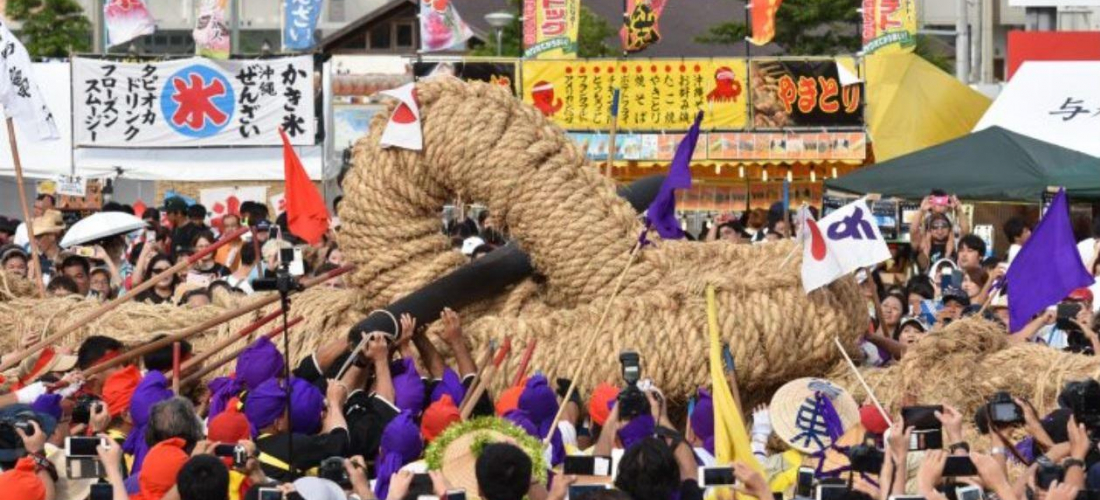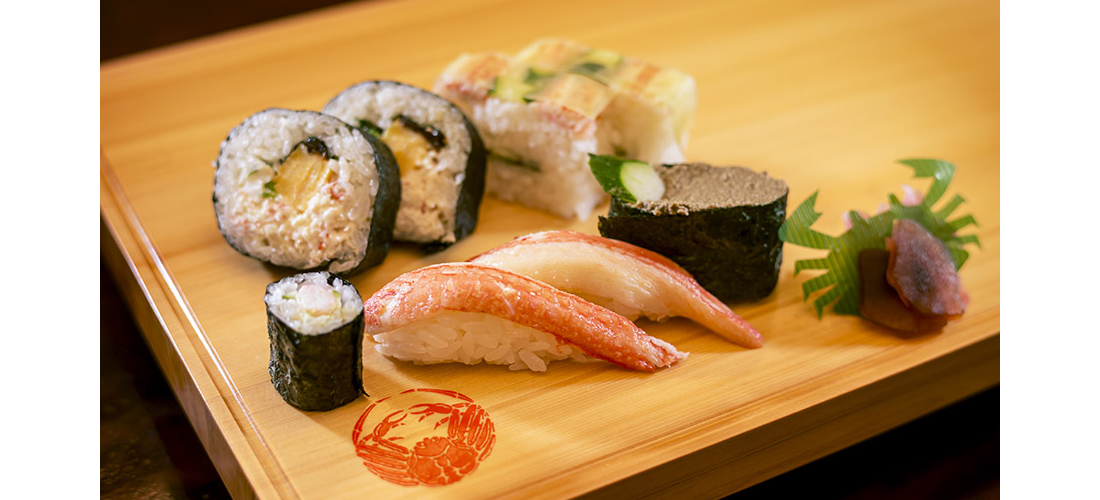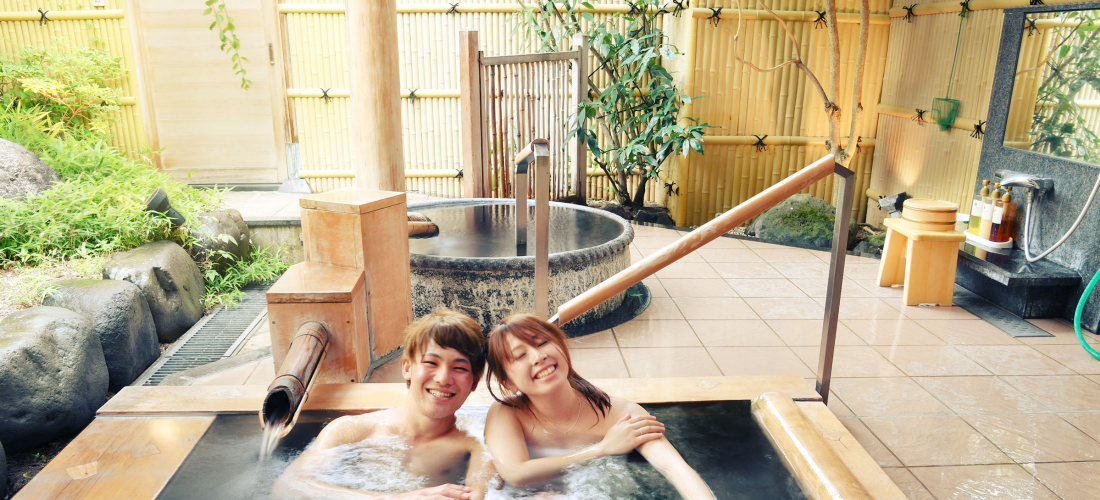
CONTENTS
Onsen, sento, rotenburo,savez-vous ce que signifient ces mots? Poursuivez votre lecture pour découvrir tout ce dont vous avez besoin pour profiter de la culture unique des sources chaudes du Japon.
La culture des sources chaudes et des spas au Japon
Les îles japonaises sont soumise à une forte activité sismique et géothermique, c'est pourquoi les îles ne sont pas seulement parsemées de volcans, mais aussi de nombreuses sources chaudes naturelles. Les Japonais utilisent des sources naturellement chaudes (appelées onsen, 温泉) pour se baigner et se détendre depuis des siècles et des siècles, et certains bains onsen populaires au Japon sont maintenant utilisés depuis plus d'un millénaire! La culture japonaise des sources chaudes a eu beaucoup de temps pour se développer et se développer, et il existe maintenant une variété énorme de façons de profiter d'un bain relaxant et chaud au pays du soleil levant.
Les Onsen standards
Le mot onsen fait référence aux sources chaudes naturelles du Japon, et c'est le terme le plus basique. La définition est simple, un onsen soit:
(1) s'écoule du sol à l'état naturel à une température supérieure à 25 ° C (77 ° F)
ou
(2) contient une certaine quantité de minéraux particuliers.
La Japan Spa Association Hot Spring of Japan a une définition plus détaillée des températures et des minéraux qui font officiellement d'une source thermale un «onsen» ici, séparant le véritable onsen des vieux bains ordinaires. Bien sûr, beaucoup de gens au Japon visitent les bains publics au Japon, qu'ils correspondent ou non à la définition stricte des onsen.
On pense généralement que les trois meilleurs onsen au Japon sont Arima Onsen à Hyogo, Kusatsu Onsen à Gunma et le Gero Onsen à Gifu, mais il existe des onsen populaires dans tout le pays. Vous auriez du mal à trouver une zone sans au moins un bain public! Et beaucoup de gens considèrent qu'une visite à un onsen fait partie intégrante d'une visite au Japon.
Prenez l’air! Les Rotenburo (露天風呂)
«Rotenburo» signifie simplement tout bain situé à l'extérieur à l'air libre, ce qui signifie qu'il peut désigner soit un onsen de source chaude naturelle, soit un bain normal. Prendre un bain à l'extérieur peut sembler un peu intimidant pour les non-initiés, mais les amateurs d'onsen tombent souvent amoureux de l'expérience du rotenburo. Ce dernier permet aux baigneurs de s'entourer de la nature et de vraiment ressentir les quatre saisons du Japon pendant qu'ils se détendent dans l'eau. Ils sont souvent ouverts tout au long de l'automne et de l'hiver, vous pouvez donc regarder les feuilles d'érable rouge dériver de la cime des arbres ou même sentir la neige fondre sur votre peau, pendant que vous restez au chaud dans le bain brûlant. Parlez d'une expérience unique!
Les Ryokan à travers le Japon proposent des rotenburo comme celui-ci dans la région d'Unazuki de Toyama, et les fans de rotenburo choisiront leurs destinations en fonction de la qualité de l'eau ou du paysage naturel. De nombreux classements japonais onsen placent Kinugawa Onsen dans les trois meilleurs du pays, avec Ito Onsen et Atami Onsen.
Bains publics: les Sento (銭湯)
Sento, ou bains publics, est souvent plus facile d'accès que les onsen, avec des emplacements dispersés dans les plus grandes villes et les plus petits villages du Japon. (Il suffit de regarder cette carte des sento de la zone de la gare de Kyoto!) C'est parce que, comme nous le savons tous maintenant, le terme onsen est strictement réglementé et est utilisé uniquement pour les sources chaudes naturelles, mais les bains sento ne peuvent utiliser que de l'eau normale. Même sans minéraux naturels ni réputation d'effets curatifs spéciaux, se baigner dans un immense bain public fait toujours partie de la culture japonaise, et les sento sont souvent occupés par les habitants appréciant un bain dans leur sento de quartier.
Sento peut être des bains publics assez basiques, mais si vous rencontrez un "Super Sento", vous trouverez probablement plus que ce que vous avez imaginé! Consultez les annonces sur SuperSento.com et vous trouverez un sento comme celui-ci à Chichibu, Saitama, où les bains partagent le bâtiment avec des magasins, des restaurants et des «salles de relaxation» pleines de fauteuils de massage.
Passez-y la nuit: les Ryokan (旅館)
Les ryokan sont des hôtels japonais traditionnels, allant des petites auberges aux plus grands établissements, et l'accent est généralement mis sur les chambres de style japonais avec des tatamis, des repas luxueux de plusieurs plats et des bains communs – généralement une source chaude naturelle. L'avantage d'aller dans un onsen ryokan est que vous pouvez vous détendre et profiter de votre propre chambre privée après avoir terminé votre bain, déguster des spécialités locales et vous endormir sans avoir à vous traîner à la maison.
Tout pour vous: les Kashikiri (貸切)
Vous n'êtes pas intéressé par un bain commun pour partager l'eau avec d'autres inconnus? Vous préférez un bain solitaire, ou peut-être un bain avec un être cher? Ne vous inquiétez pas, il y a une option pour vous aussi! Kashikiri signifie location privée, et de nombreuses installations onsen (en particulier les ryokan) proposent des onsen kashikiri qui peuvent être loués pour un usage privé. Certains hébergements ont même des bains kashikiri intégrés directement sur le balcon des chambres!
♨ Le savoir-vivre dans les Onsen ♨
Prêt à faire une bombe tout nu pour amuser la gallerie? Visiter un onsen peut être amusant, mais ce n'est pas vraiment l'endroit pour faire des folies… Les bains collectifs fonctionnent parce que chacun fait de son mieux pour profiter de l'expérience sans déranger les autres, ce qui est en effet très japonais. La plupart des «règles onsen» que vous verrez relèvent du bon sens, et elles sont principalement là pour vous garder, vous et les autres baigneurs, en sécurité et heureux, alors gardez un œil attentif et suivez les règles que vous voyez affichées! Pour quelques consignes de sécurité de base avant de partir, consultez celles de la Japan Spa Association Hot Spring of Japan.
Onsen autorisant les tatouages
Malheureusement, de nombreux bains publics au Japon ne permettent toujours pas aux personnes tatouées d'entrer dans l'eau ― ou, dans certains cas, d'entrer même dans les bâtiments! Pendant de nombreuses années, les tatouages au Japon ont été associés aux Yakuza, et donc, interdire les clients tatoués est toujours considéré comme une pratique de sécurité dans certains onsen et sento. Mais au fil des années, de plus en plus d'établissements autorisent les tatouages, et de nombreux endroits sont prêts à faire des exceptions pour les voyageurs étrangers avec de petits dessins. Si vous en avez, consultez notre liste de sources chaudes autorisant les tatouages pour savoir où aller!
Profitez du bain!
Les sources chaudes du Japon sont profondément liées à la culture locale et les voyageurs commencent tout juste à le comprendre. Mais le monde des onsen est vaste, avec beaucoup à offrir ― les vrais amateurs d'onsen peuvent acquérir les qualifications nécessaires pour devenir «instructeur onsen», «sommelier onsen» ou «coordinateur onsen». Il y a même des onsen qui attendent toujours d'être trouvés, nichés dans les berges et les dunes de sable ou dans les montagnes ― serez-vous celui qui les trouvera?
(Faites juste attention, cependant, ces sources chaudes dans la nature peuvent être brûlantes!)
Pour d'autres infos et news sur le Japon, suivez Japankuru sur twitter, instagram, et facebook!
Details
NAME:source chaude au Japon
MAP
COMMENT
FEATURED MEDIA
VIEW MORE 
A New Tokyo Animal Destination: Relax & Learn About the World’s Animals in Japan
#pr #japankuru #anitouch #anitouchtokyodome #capybara #capybaracafe #animalcafe #tokyotrip #japantrip #카피바라 #애니터치 #아이와가볼만한곳 #도쿄여행 #가족여행 #東京旅遊 #東京親子景點 #日本動物互動體驗 #水豚泡澡 #東京巨蛋城 #เที่ยวญี่ปุ่น2025 #ที่เที่ยวครอบครัว #สวนสัตว์ในร่ม #TokyoDomeCity #anitouchtokyodome

Shohei Ohtani Collab Developed Products & Other Japanese Drugstore Recommendations From Kowa
#pr #japankuru
#kowa #syncronkowa #japanshopping #preworkout #postworkout #tokyoshopping #japantrip #일본쇼핑 #일본이온음료 #오타니 #오타니쇼헤이 #코와 #興和 #日本必買 #日本旅遊 #運動補充能量 #運動飲品 #ช้อปปิ้งญี่ปุ่น #เครื่องดื่มออกกำลังกาย #นักกีฬา #ผลิตภัณฑ์ญี่ปุ่น #อาหารเสริมญี่ปุ่น

도쿄 근교 당일치기 여행 추천! 작은 에도라 불리는 ‘가와고에’
세이부 ‘가와고에 패스(디지털)’ 하나면 편리하게 이동 + 가성비까지 완벽하게! 필름카메라 감성 가득한 레트로 거리 길거리 먹방부터 귀여움 끝판왕 핫플&포토 스폿까지 총집합!
Looking for day trips from Tokyo? Try Kawagoe, AKA Little Edo!
Use the SEIBU KAWAGOE PASS (Digital) for easy, affordable transportation!
Check out the historic streets of Kawagoe for some great street food and plenty of picturesque retro photo ops.
#pr #japankuru #도쿄근교여행 #가와고에 #가와고에패스 #세이부패스 #기모노체험 #가와고에여행 #도쿄여행코스 #도쿄근교당일치기 #세이부가와고에패스
#tokyotrip #kawagoe #tokyodaytrip #seibukawagoepass #kimono #japantrip

Hirakata Park, Osaka: Enjoy the Classic Japanese Theme Park Experience!
#pr #japankuru #hirakatapark #amusementpark #japantrip #osakatrip #familytrip #rollercoaster #retrôvibes #枚方公園 #大阪旅遊 #關西私房景點 #日本親子旅行 #日本遊樂園 #木造雲霄飛車 #히라카타파크 #สวนสนุกฮิราคาตะพาร์ค

🍵Love Matcha? Upgrade Your Matcha Experience With Tsujiri!
・160년 전통 일본 말차 브랜드 츠지리에서 말차 덕후들이 픽한 인기템만 골라봤어요
・抹茶控的天堂!甜點、餅乾、飲品一次滿足,連伴手禮都幫你列好清單了
・ส่องมัทฉะสุดฮิต พร้อมพาเที่ยวร้านดังในอุจิ เกียวโต
#pr #japankuru #matcha #matchalover #uji #kyoto #japantrip #ujimatcha #matchalatte #matchasweets #tsujiri #말차 #말차덕후 #츠지리 #교토여행 #말차라떼 #辻利抹茶 #抹茶控 #日本抹茶 #宇治 #宇治抹茶 #日本伴手禮 #抹茶拿鐵 #抹茶甜點 #มัทฉะ #ของฝากญี่ปุ่น #ชาเขียวญี่ปุ่น #ซึจิริ #เกียวโต

・What Is Nenaito? And How Does This Sleep Care Supplement Work?
・你的睡眠保健品——認識「睡眠茶氨酸錠」
・수면 케어 서플리먼트 ‘네나이토’란?
・ผลิตภัณฑ์เสริมอาหารดูแลการนอน “Nenaito(ネナイト)” คืออะไร?
#pr #japankuru #sleepcare #japanshopping #nenaito #sleepsupplement #asahi #睡眠茶氨酸錠 #睡眠保健 #朝日 #l茶胺酸 #日本藥妝 #日本必買 #일본쇼핑 #수면 #건강하자 #네나이토 #일본영양제 #อาหารเสริมญี่ปุ่น #ช้อปปิ้งญี่ปุ่น #ร้านขายยาญี่ปุ่น #ดูแลตัวเองก่อนนอน #อาซาฮิ

Japanese Drugstore Must-Buys! Essential Items from Hisamitsu® Pharmaceutical
#PR #japankuru #hisamitsu #salonpas #feitas #hisamitsupharmaceutical #japanshopping #tokyoshopping #traveltips #japanhaul #japantrip #japantravel

Whether you grew up with Dragon Ball or you just fell in love with Dragon Ball DAIMA, you'll like the newest JINS collab. Shop this limited-edition Dragon Ball accessory collection to find some of the best Dragon Ball merchandise in Japan!
>> Find out more at Japankuru.com! (link in bio)
#japankuru #dragonball #dragonballdaima #animecollab #japanshopping #jins #japaneseglasses #japantravel #animemerch #pr

This month, Japankuru teamed up with @official_korekoko to invite three influencers (originally from Thailand, China, and Taiwan) on a trip to Yokohama. Check out the article (in Chinese) on Japankuru.com for all of their travel tips and photography hints - and look forward to more cool collaborations coming soon!
【橫濱夜散策 x 教你怎麼拍出網美照 📸✨】
每次來日本玩,是不是都會先找旅日網紅的推薦清單?
這次,我們邀請擁有日本豐富旅遊經驗的🇹🇭泰國、🇨🇳中國、🇹🇼台灣網紅,帶你走進夜晚的橫濱!從玩樂路線到拍照技巧,教你怎麼拍出最美的夜景照。那些熟悉的景點,換個視角說不定會有新發現~快跟他們一起出發吧!
#japankuru #橫濱紅磚倉庫 #汽車道 #中華街 #yokohama #japankuru #橫濱紅磚倉庫 #汽車道 #中華街 #yokohama #yokohamaredbrickwarehouse #yokohamachinatown

If you’re a fan of Vivienne Westwood's Japanese designs, and you’re looking forward to shopping in Harajuku this summer, we’ve got important news for you. Vivienne Westwood RED LABEL Laforet Harajuku is now closed for renovations - but the grand reopening is scheduled for July!
>> Find out more at Japankuru.com! (link in bio)
#japankuru #viviennewestwood #harajuku #omotesando #viviennewestwoodredlabel #viviennewestwoodjapan #비비안웨스트우드 #오모테산도 #하라주쿠 #日本購物 #薇薇安魏斯伍德 #日本時尚 #原宿 #表參道 #japantrip #japanshopping #pr

Ready to see TeamLab in Kyoto!? At TeamLab Biovortex Kyoto, the collective is taking their acclaimed immersive art and bringing it to Japan's ancient capital. We can't wait to see it for ourselves this autumn!
>> Find out more at Japankuru.com! (link in bio)
#japankuru #teamlab #teamlabbiovortex #kyoto #kyototrip #japantravel #artnews
Photos courtesy of teamLab, Exhibition view of teamLab Biovortex Kyoto, 2025, Kyoto ® teamLab, courtesy Pace Gallery

Japanese Makeup Shopping • A Trip to Kamakura & Enoshima With Canmake’s Cool-Toned Summer Makeup
#pr #canmake #enoshima #enoden #에노시마 #캔메이크 #japanesemakeup #japanesecosmetics

⚔️The Robot Restaurant is gone, but the Samurai Restaurant is here to take its place. Check it out, and don't forget your coupon!
🍣신주쿠의 명소 로봇 레스토랑이 사무라이 레스토랑으로 부활! 절찬 쿠폰 발급중
💃18歲以上才能入場的歌舞秀,和你想的不一樣!拿好優惠券去看看~
#tokyo #shinjuku #samurairestaurant #robotrestaurant #tokyotrip #도쿄여행 #신주쿠 #사무라이레스토랑 #이색체험 #할인이벤트 #歌舞伎町 #東京景點 #武士餐廳 #日本表演 #日本文化體驗 #japankuru #japantrip #japantravel #japanlovers #japan_of_insta

Japanese appliance & electronics shopping with our KOJIMA x BicCamera coupon!
用JAPANKURU的KOJIMA x BicCamera優惠券買這些正好❤️
코지마 x 빅 카메라 쿠폰으로 일본 가전 제품 쇼핑하기
#pr #japankuru #japanshopping #kojima #biccamera #japaneseskincare #yaman #dji #osmopocket3 #skincaredevice #日本購物 #美容儀 #相機 #雅萌 #日本家電 #일본여행 #면세 #여행꿀팁 #일본쇼핑리스트 #쿠폰 #일본쇼핑 #일본브랜드 #할인 #코지마 #빅카메라 #japankurucoupon


